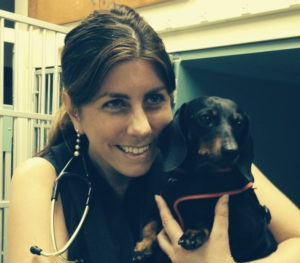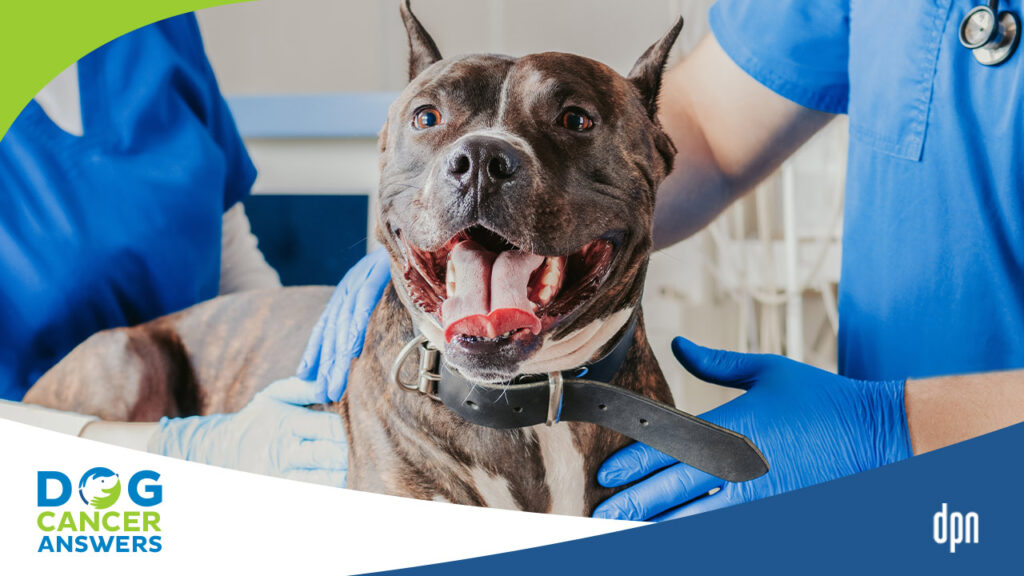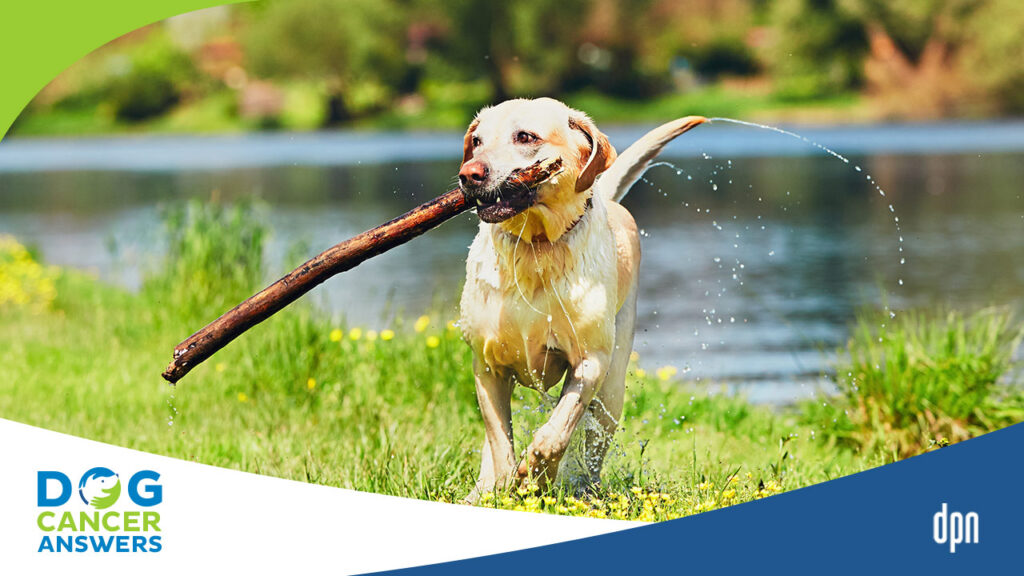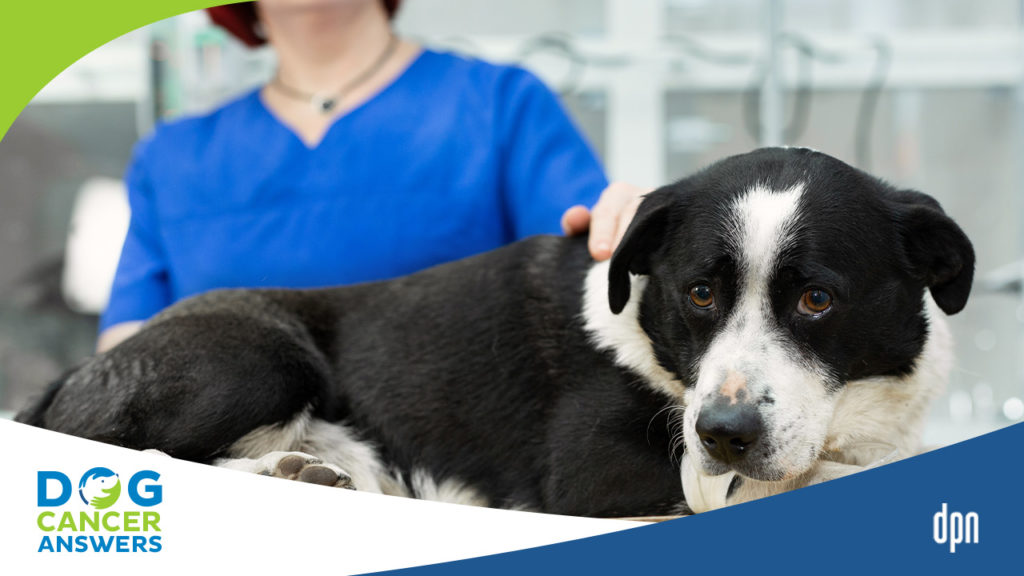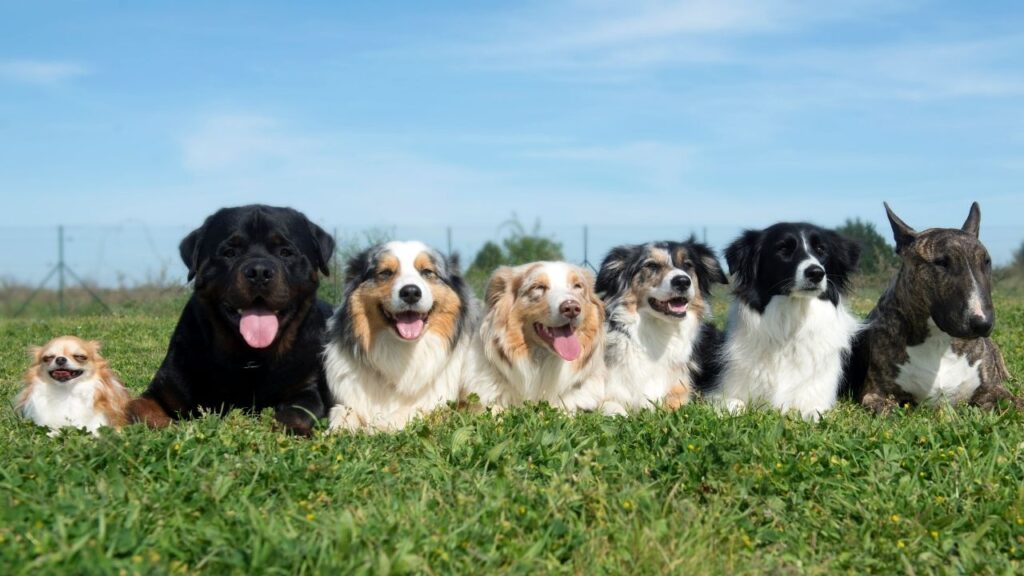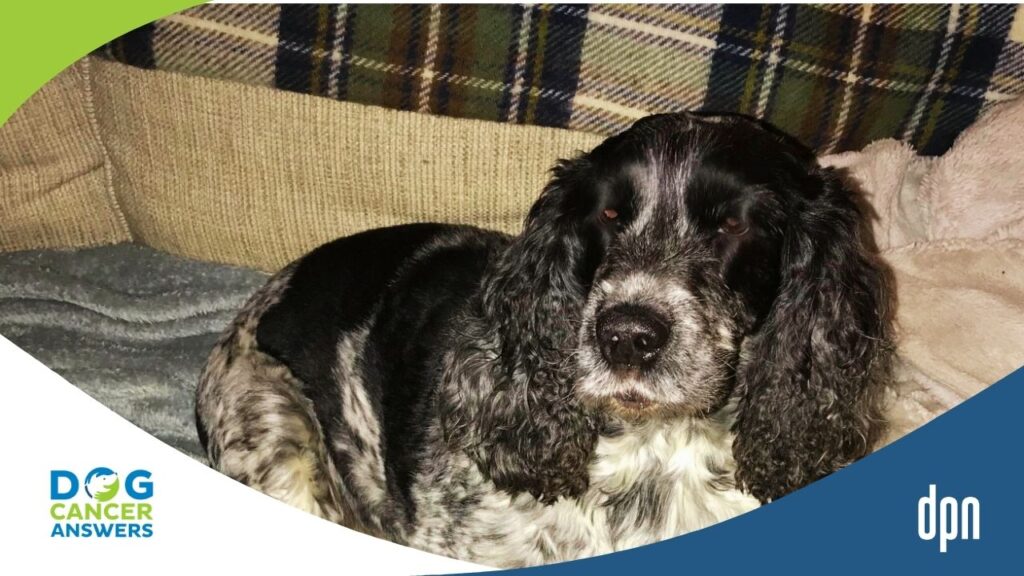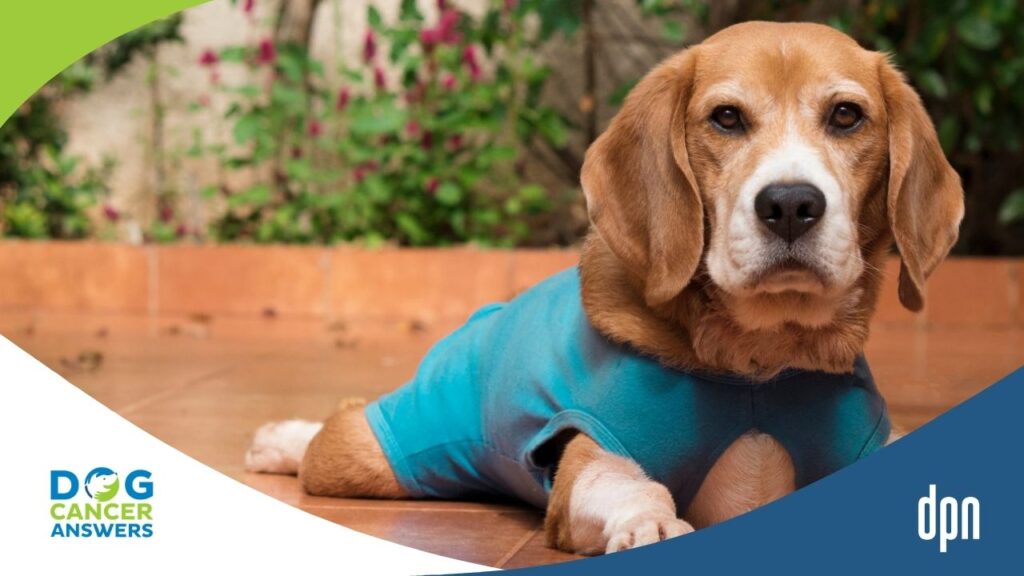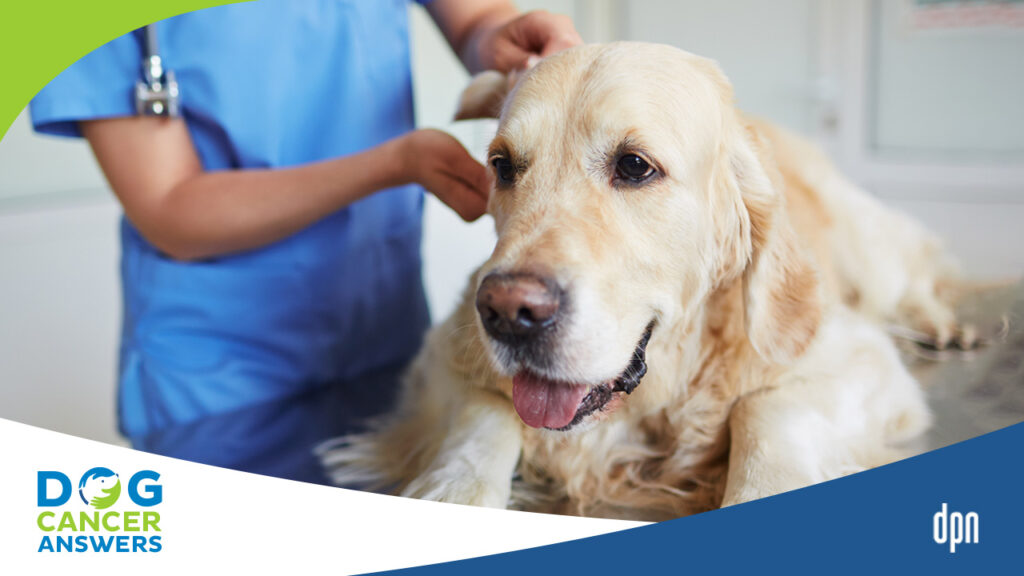EPISODE 174 | RELEASED July 4, 2022
What Are Some Guidelines for Dog Cancer Detection? Q&A | Dr. Brooke Britton
Caller Janet wants to know what guidelines there are for catching dog cancer early.
SHOW NOTES
Caller Janet has found that in her breed, checking the anal glands every six months after the dog turns six years old can be really helpful for catching anal gland carcinomas early, and wonders if there are other things that owners can do for other cancers.
Oncologist Brooke Britton discusses the importance of routine wellness visits with your veterinarian, as well as screening tests that can be done once in a while, such as liquid biopsies or taking x-rays. She also emphasizes what we as dog lovers can do at home to pick up any lumps or behavioral changes quickly, track lump growth, and be advocates for our dogs and seek veterinary care promptly to get tumors removed while they are small and before they can spread.
Nationwide Diversity of Risk white paper
[00:00:00] >> Dr. Brooke Britton: Cancer signs can be sometimes very nebulous and very subtle. It’s not always seeing a, a tumor or feeling a tumor on the body. Sometimes we’ll see behavioral changes in terms of how a dog – or a cat for that matter – behaves.
[00:00:19] >> Announcer: Welcome to Dog Cancer Answers, where we help you help your dog with cancer.
[00:00:25] >> Molly Jacobson: Hello friend. Today on Dog Cancer Answers, we’re taking a Listener Line call from Janet who has a plan for how to catch anal gland cancer early in her breed of dog.
And she’s wondering if there are other guidelines that we might wanna put in place for our dogs. To answer that question and more, we are bringing back Dr. Brooke Britton oncologist for another episode of Dog Cancer Answers. Dr. Britton, thank you so much for joining us today.
[00:00:55] >> Dr. Brooke Britton: Thank you for having me.
[00:00:56] >> Molly Jacobson: So we’re gonna hear from Janet and she has a question about early indicators.
Let’s take a listen.
[00:01:04] >> Janet: Hello. My name is Janet. I am owner and breeder at Ruby Rose Kennels in central Washington state and work with German Longhaired Pointers out of Holland. My question is mostly a suggestion. And that is, in experiencing cancers, uh, such as anal gland cancer and lymphoma, I have studied extensively globally to learn what kind of indicators might be available.
And it would just be great for help knowing when to start looking for signs of these potential killers in our dogs. I know for instance the glandular cancers tend to occur at six years plus and that there are things that can be done just as simple as having a vet check on anal glands, for instance, every six months after the age of six.
So if there are other things that could be put on the list for owners to know on a timeline basis when we could be looking for some warning signs, I think that would be very helpful in our care and also in making our local vets partners in looking out for these serious diseases. I’ve followed your podcast for many, many years.
You’ve been helpful to me in many ways. And if I ever can give back, of course I will do.
[00:02:33] >> Molly Jacobson: Well, thank you, Janet. That’s so nice to hear, and I really appreciate you calling in with your question, which I think is a great one. Dr. Britton, what are the things that we who love dogs should be doing on a regular basis throughout their lifespan to check for cancer?
Janet thinks that anal glands should be checked every six months after the age of six. Is that a good idea, and are there any other tips that you wanna put on our to-do list?
[00:03:03] >> Dr. Brooke Britton: So many things.
[00:03:04] >> Molly Jacobson: So many things.
[00:03:06] >> Dr. Brooke Britton: So many things. So I think that Janet’s question is a really great question. And she does make a point at the end of talking about how it’s a team effort, because it really, really is, between people monitoring their dogs at home, uh, between their primary veterinarians, and sometimes their specialist veterinarians if they need specialty care. So it really is a, a team effort monitoring these things. Honestly, I think one of the best things that people can do is to bring their dogs regularly for wellness checks, to which she also alluded. In general when a dog is in their younger years, once a year is generally adequate as long as they’re healthy and happy and eating well and no major behavioral changes, no major weight loss, or any, anything concerning of that nature.
As they get older – and older means something different depending upon the breed – I know a lot of large to giant breed dogs tend to age a little bit more rapidly internally than some smaller dogs, for example, or pure bred versus mixed breed dogs in some cases. So, older really depends on the breed we’re dealing with.
Often we’re getting a little bit older when we’re in the six to eight plus range for large to giant breed dogs. We’re getting a little older in the eight to 10 year plus range for kind of medium dogs and maybe 10 plus for smaller dogs. And again, those are just general guidelines. But as we get older, sometimes those wellness exams are increasing in frequency, maybe every six months as she alluded to. And things that we do during a general wellness exam – including in my cancer patients who are in remission but I’m monitoring them for their general health and perhaps recurrence – are looking at structures that we don’t commonly pay attention to in our every day today with them, such as the anal sacs or anal glands. They can hide tumors like anal sac adenocarcinoma, and they’re often tumors that you would more feel internally versus see externally, with exception, but usually if you start to see a tumor in the anal sacs externally, we’re in more trouble because it may have been growing for a longer period of time, or it may be more difficult to remove once we can actually see it from the outside.
Um, feeling lymph nodes externally, many vets are very adept at feeling peripheral lymph nodes for evidence of lymphoma or other infectious diseases or other cancers. So that type of screening happens at a wellness visit. Feeling for lumps or bumps all over the body is also something that we do routinely.
And if someone at home feels a lump or bump or they feel that their dog is just not feeling well or that something is amiss, then having a, a spontaneous appointment or a, a recheck appointment in between wellness visits is very important to bring that concern to a vet’s attention so that we can address it promptly if it ends up being something indeed that’s more concerning and needs to be medically addressed. The other thing that happens at wellness checks is oftentimes baseline blood work and other testing for infectious disease, for parasites, other issues that can cause quality of life concerns that can mimic certain behavioral and, and other constitutional changes that we can see with cancer and can be a differentiating test – is this something that is an easily fixable problem that is something that can be dealt with in one visit or two visits, or is it something where we’ve actually diagnosed a more serious disease or a cancer where we need ongoing treatment? So many of these things can be picked up at a screening visit through a basic physical examination or through baseline blood work.
At home, you know, cancer signs can be sometimes very nebulous and very subtle. It’s not always seeing a, a tumor or feeling a tumor on the body. Sometimes we’ll see behavioral changes in terms of how a dog – or a cat for that matter – behaves. Maybe they are lethargic or more withdrawn. Maybe they are spending time in a different room, or on a different surface even, rug versus hardwood floor or tile, that is atypical for them. Maybe their day to day routine is disrupted. They normally follow you around all the time from room to room when you’re working from home and, and then you notice that they’re under the bed or they’re under a chair or hiding behind the coffee table and they’re not following you around.
[00:07:38] >> Molly Jacobson: Mm-hmm
[00:07:39] >> Dr. Brooke Britton: Or they’re missing their normal 5:00 PM walk, or they don’t wanna walk as long.
So sometimes these things can be very subtle. Other times we notice that they’re not eating very well, or they’re having GI distress, like vomiting, diarrhea, they’re losing weight, other types of signs that are nonspecific and that they could indicate other things that may be benign, like a GI bug. Distressing, nonetheless, but those types of signs can be signs related to cancer as well. So any deviation from the norm, especially if it’s persistent, increasing in frequency, or worsening over time, is important for us to, to bring to the attention of a veterinarian.
[00:08:22] >> Molly Jacobson: It strikes me that, you know, we know our dogs best, right? We know our dogs better than anybody else could.
And so as dog lovers we just really need to have a picture in our head that we can compare. Our dog today is behaving like this, is that, is that who we know our dog to be? And any deviation from that – I think there’s an intuitive sense, sometimes there’s just something off. Something’s just not right.
[00:08:45] >> Dr. Brooke Britton: Mm-hmm.
[00:08:46] >> Molly Jacobson: And, um, we should pay attention to that, it sounds like you’re saying.
[00:08:49] >> Dr. Brooke Britton: It’s true. And sometimes these things are so subtle that, you know, a person may bring their dog in to see me and say, look, he’s just not right. I can’t put my finger on it, but there’s just something that isn’t right. And I think that’s a hard one for vets to field because it’s nonspecific and it’s very broad, but at the same time, it doesn’t make it any less valid. Because many times when people bring that to our attention, they are right, you know, it’s something that is not quite right with their dog and something is going on. So it’s important to note those changes. And again, especially if there’s a pattern or a trend, whether increasing in frequency or duration or worsening in any sense.
[00:09:31] >> Molly Jacobson: Dr. Dressler once told me, as a general practitioner, whenever he sees a dog for a wellness visit, he says the average is three to five things that are off, that aren’t ideal, that might be indicating that something’s going wonky and needs to be addressed and helped along to keep that dog healthy in the long term. And those wellness checks, it seems – you know, your dog’s six, you don’t think, "My dog’s older." So your screening guidelines basically are, once a year until your dog is older – six for a large breed, eight to 10 for a medium breed, and 10 plus for a small breed – and then six months ever after, basically, for those wellness checks, just to make sure that everything’s lined up.
[00:10:21] >> Dr. Brooke Britton: That’s a general guideline. You know, there are some people that would want screening more frequently, and that’s not wrong to do.
It’s never wrong to go see your vet, you know, just for a wellness check, even every six months, if that’s something that makes you feel better. And your veterinarian may not always run every single test or every single diagnostic at those visits, and most will kind of have a set interval at which they do those diagnostics, like blood work, for example, especially if we do feel that a dog is truly healthy and we’re not seeing any red flags of concern. But screening is in general very important. And in addition, there are many dog breeds that are predisposed to certain types of cancer. So while just like in human medicine you may not, even if you have a family history of, let’s say gastric cancer, you may not get ultrasounds, you know, every six months, or even at your annual physicals, there may be certain, um, intervals that we alter or adjust for dogs that are more predisposed to certain types of cancer, especially if they have a history in their lineage, where we may be screening them more frequently. Or we may do a diagnostic like chest x-rays or an ultrasound as they get older even if they appear to be completely well, so that we’re trying to catch these disease processes early, especially with cancers that are very insidious, that may develop and progress over time where we may not have any outward signs of illness until they really start to get bigger and, and feel sick.
[00:11:57] >> Molly Jacobson: So true. Let’s take a brief break here, but when we come back, I want to ask you about how we can figure out concrete screening guidelines in the future.
We are back with oncologist Brooke Britton. I recently spoke to Dr. Jules Benson with Nationwide Pet Insurance. And he was talking about the two papers that they’ve released so far this year, white papers based on their claims data for, I think it’s 1.5 million dogs.
[00:12:26] >> Dr. Brooke Britton: Mm-hmm.
[00:12:26] >> Molly Jacobson: So they have this huge sample size, and one of their goals as they continue to release these white papers is basically they’re just saying here’s an interesting pattern. And he wants to be able to, for every breed, have a list of diagnostics or things to look out for. Because they have it in their claims data, they know what is happening with dogs – in their sample, obviously – but we might be able to have these tools where we can say, oh, you have a Doxie, so you wanna start checking for X at age five, and by the time they’re eight, they should do this one diagnostic for this one thing.
That seems like a really useful tool to me, that we start to get some more specific guidelines based on breed, size, age, whatever’s coming up. Does that feel juicy to you?
[00:13:16] >> Dr. Brooke Britton: Yes. Yeah, with a caveat. I think having that much data – because a lot of our veterinary studies are kind of small sample sizes at best, I would say it’s rare for us to have studies, especially prospective designed studies, that have hundreds of patients. You know, it often doesn’t really exist in our world because it’s difficult to get that number of patients like it is in the human realm where they have many more patients for their clinical trials.
So even though this is what we would call retrospective data, we’re sort of analyzing it in retrospect and seeing what blood work abnormalities these dogs had, what’s clinical symptomology they had before they were diagnosed with certain cancers or other diseases, it can still be useful to make kind of broad generalizations about certain breeds or certain ages of dogs and kind of stratify that data and see, are there patterns that have evolved in these larger populations that should direct some of our diagnostic guidelines. These are always guidelines though. So the only caveat I would say is that, that data is very valuable, but then we also have individuals. And so we can make some generalizations and use that to guide our decisions, but we always have to look at the individual patient and say, well, what do I think is most appropriate for this individual? And if it’s doing a screening diagnostic or not, as the case may be, sooner or later than those guidelines might suggest, if they materialize. Then if we’re doing that, that’s because we think it’s in the best interest of the patient.
So we always have to look at the individual and adjust the guidelines to what we think that that patient needs at that time.
[00:14:57] >> Molly Jacobson: That’s an excellent point. So often, you know, in our Facebook group for folks who are dealing with dog cancer, for example, we’ll hear, you know, a very common complaint is my vet didn’t think to do this, or my vet skipped this test.
And I often feel that what’s really being expressed is, I wish none of this had happened, and I wish someone had figured this out sooner. And because the veterinarian is the person who’s supposed to know, they’re supposed to know. But the reality is that you only have what you have to deal with and you can only make your best judgment based on what’s going on with this individual dog at any given time.
And things get missed, and things couldn’t have been found in the first place.
[00:15:41] >> Dr. Brooke Britton: Mm-hmm.
[00:15:41] >> Molly Jacobson: And the guidelines are only ever there to suggest a way through the wilderness of actually just being there with the dog and paying attention to that dog. And as dog owners, I know I as a dog owner, it’s my job to make sure that I understand my dog really well and that I know what’s going on with her, and then I consult with my veterinarian about that, because she’s my dog.
[00:16:02] >> Dr. Brooke Britton: That is true. Sometimes things are truly missed, you know mistakes happen in any field and veterinarians are not immune to making mistakes, as well-intentioned and as diligent as, as we all try to be. In reality with many cancers, there can be situations where cancer is more insidious, so it grows internally and maybe, especially in a larger breed dog, it’s not something that can be felt or detected when it’s very small. It may be a silent tumor and cause no clinical signs for a longer period of time. And if a dog is otherwise healthy, we’re not necessarily doing advanced imaging or other testing at a routine wellness exam that may pick up that tumor.
And those tests can be very expensive and sometimes require sedation or anesthesia. And so just like in the human realm, we deal with probabilities, what’s the probability of a dog having this problem and needing this type of test, so that we’re not doing CT scans every six months on a dog, right? And anesthetizing them and, uh-
[00:17:03] >> Molly Jacobson: Right.
[00:17:03] >> Dr. Brooke Britton: -you know, putting them through that procedure and, and their people through the cost of that procedure. So there is that. And some cancers also come up very, very quickly, like lymphoma, for example. Lymphoma can arise within days to maybe a week or two, or a month or two at best. So many of the aggressive, um, especially the immune system cancers, they can propagate very quickly. And so a veterinarian may have seen a dog for a wellness exam who had totally normal lymph nodes and was quote unquote healthy, you know, even a week prior, two weeks prior, a month prior. And then we have, you know, the lymph nodes getting big, someone else detecting them perhaps, or the vet detecting them on a follow up visit.
And then people being like, well, why wasn’t this detected? I only saw my vet last week or last month. You know mast cell tumors can pop up very quickly as well. Sometimes I’ll see a dog and then two weeks later they have a tumor pop up and it’s like, well, why didn’t you see this? And it wasn’t truly there. And so those types of situations can happen, and it can be frustrating for people because they may not realize that, the rapidity with which some of these problems can develop.
So oftentimes it’s just a conversation and communication about those disease processes, a little bit of education, and, and most of the times people then come to understand, okay, this really could happen on that timeframe, even though it doesn’t seem feasible. But sometimes that really is what’s happening too, it’s not that a vet missed something, it’s that it truly wasn’t there or wasn’t detectable at the time that they were last examined.
[00:18:33] >> Molly Jacobson: Yeah, that is so important. It is shocking how quickly mast cell tumors and lymphoma can just pop up, pop out of nowhere.
[00:18:43] >> Dr. Brooke Britton: Absolutely.
[00:18:44] >> Molly Jacobson: And it blindsides people. And of course it does.
It’s shocking how quickly they develop.
[00:18:49] >> Dr. Brooke Britton: It is.
[00:18:50] >> Molly Jacobson: And there’s no way to know that they’re coming.
[00:18:52] >> Dr. Brooke Britton: That is true. Yeah. Oftentimes that is true. This is a whole other conversation, but there are newer tests on the horizon. One in particular, that’s a liquid biopsy test that just came out, to try to detect cancers very early via bloodborne test. You know, looking at biomarkers and other types of early detection indicators is something that we are trying to push forward in veterinary medicine, but these tests are still not incredibly specific. So they may indicate that cancer is likely present and it may hone it down to an 85% likelihood of X, Y, and Z cancer, but oftentimes we’re not able to know with certainty based off of one biomarker test or one early detection test what cancer we’re dealing with. With rare exception, and, and one of those is the BRAF assay for bladder cancers.
[00:19:40] >> Molly Jacobson: That one you can tell.
[00:19:42] >> Dr. Brooke Britton: You can, with near certainty. But diligent screening, and really, again, the more eyes and hands that we have, partnership between the pet owner and between their veterinarian is usually very instrumental in detecting cancer early.
And the earlier we detect it, just like on the human side, the more options we often will have.
[00:20:02] >> Molly Jacobson: Well, thank you so much, Dr. Brooke Britton, for that comprehensive and helpful answer.
[00:20:09] >> Dr. Brooke Britton: Thank you.
[00:20:10] >> Molly Jacobson: And thank you, Janet, for that question that just opened us wide up to all sorts of interesting insights from Dr. Britton. To just wrap that conversation up, let’s turn to Kate Basedow, our producer. Thanks for joining me Kate to have a little debrief.
[00:20:29] >> Kate Basedow: Hi, thanks for having me back.
[00:20:31] >> Molly Jacobson: Absolutely. So, what do you think about the exam guidelines? Your mother is a veterinarian and you are a licensed veterinary tech, and you’ve worked in the veterinary field for a long time, what do you think about those general wellness exam guidelines that Dr. Britton gave?
[00:20:48] >> Kate Basedow: It’s absolutely a good idea. It’s amazing with some of the subtle things that come on, how much we, even as dedicated dog lovers who adore and worship our dogs, can miss when things just creep up slowly.
[00:21:05] >> Molly Jacobson: Mm-hmm .
[00:21:05] >> Kate Basedow: And especially when you have that relationship with your regular veterinarian where you’re coming in with your senior dog every six months, they get to know your dog really well.
And they might, as soon as you walk in that exam room go, oh, how long has he been limping on that leg, or has she always had that head tilt? And you might not have noticed that yourself because it just happened so gradually that it was still a part of the picture of normal that you had for your dog in your head.
[00:21:36] >> Molly Jacobson: And sometimes, sometimes I don’t notice that something’s going on. Like right now I have Kanga here in her little bag. And the reason I do is because it took me about six hours today to notice that she’s just not feeling well. There were a bunch of things, but I didn’t see it right away. We’re not, you know, we’re not always as attentive as we would like to be.
[00:21:58] >> Kate Basedow: Mm-hmm. And it’s just the nature of being with another being every day.
[00:22:04] >> Molly Jacobson: Right.
[00:22:04] >> Kate Basedow: You get used to, miss the subtle things. It’s like when you see a friend that you haven’t seen in a while, and they’ve been working on either an active fitness program or trying to eat healthier. And if you’re with them every day, you might not notice the progression, but if you haven’t seen them in a couple months and then meet up for lunch or something, it’s like, wow, everything you’ve been doing has really been working and you look so different and can really see the results.
[00:22:32] >> Molly Jacobson: This is how you know that you and I are different ages because I thought you were going, you haven’t seen a friend for a while and you see them and you think, oh my God, you look so old. And then you look at yourself and you go, oh my God, you look so old.
[00:22:47] >> Kate Basedow: Well that too, but we try not to think about that.
[00:22:49] >> Molly Jacobson: All of my friends right now are like, Molly! Um, yeah, that was a really interesting question that Janet brought to us today and I’m really glad that she did. And I felt like we got a really good discussion with Dr. Britton out of it.
[00:23:05] >> Kate Basedow: Yeah. And I really feel for both the owners and the vets around screening because it’s one of those things where we all want to do the screening as much as needed, as much as possible, to try to catch stuff early.
[00:23:19] >> Molly Jacobson: Mm-hmm.
[00:23:20] >> Kate Basedow: But having to balance it with the practicality and the cost.
[00:23:24] >> Molly Jacobson: Yeah.
[00:23:25] >> Kate Basedow: My breed – Belgian Tervuren – we’re starting to see more cases of gastric carcinoma, stomach cancer.
[00:23:32] >> Molly Jacobson: Mm.
[00:23:32] >> Kate Basedow: And it’s one of those cancers where by the time you have clinical signs, it’s usually too late to really do anything, except try to keep ’em comfortable for a little while. And the only way to get a definitive diagnosis is to do endoscopy.
So to put the dog under anesthesia and put a special camera on a scope down their esophagus and into the stomach to check it out. And then you can, if there is a mass that’s found, can take a biopsy and everything. And obviously that is not cheap. Even if your general practice vet has an endoscope, it’s still not a cheap procedure.
And you’ve got anesthesia and the risks that come with that – if you’re doing it as a screening tool with a healthy dog that’s a lot lower risk for anesthesia, but still, every anesthetic event is a risk. And also, just because your dog has a negative scope today doesn’t mean that a mass isn’t gonna show up in two days.
[00:24:34] >> Molly Jacobson: Right.
[00:24:34] >> Kate Basedow: So then the question is, even if you are willing to invest the, willing and able to invest the money to do regular endoscopes of your dog, how often are you gonna do that? Every six months?
[00:24:46] >> Molly Jacobson: Right.
[00:24:46] >> Kate Basedow: Every two months? Once a year?
[00:24:48] >> Molly Jacobson: Right.
[00:24:48] >> Kate Basedow: Yeah. It’s not practical, and, yeah.
[00:24:51] >> Molly Jacobson: And if you have another dog that is not at high risk for a specific cancer, then, you know, she said we could do CAT scans, but those are expensive and they’re exposing the dog to radiation.
There’s, like, if you don’t need to do it, you don’t necessarily want to do diagnostic imaging like that on a routine basis. It’s very hard. And it’s also hard because dogs don’t speak English.
[00:25:18] >> Kate Basedow: Yes.
[00:25:18] >> Molly Jacobson: So we can’t ask them if everything’s okay. We have to really go on what we know about our dogs and on what the tests tell us and what the wellness exams – and I guess that’s really why the best recommendation is to go to the vet for the wellness exam, so that – what we pay attention to and what we measure tends to improve. And so if we want the health of our dogs to improve, we should probably take them to the vet on a pretty regular basis just to make sure everything’s going well.
[00:25:47] >> Kate Basedow: Yeah. Keeping up with that annual exam for young dogs and every six months, or potentially even more often if you’ve got a really senior dog who’s having a lot of troubles or just not seeming right.
[00:26:01] >> Molly Jacobson: Mm-hmm.
[00:26:01] >> Kate Basedow: And it’s always so heartbreaking to me when you hear someone ask the question, how did my vet miss this?
‘Cause like Dr. Britton was saying, there’s so many different ways that something can be "missed" where it might not actually be missed. And especially because the other thing that you hear and see all the time, both in veterinary hospitals if you’re just hanging out in the waiting room, or online on forums, is complaints about the cost of veterinary care and everything.
[00:26:33] >> Molly Jacobson: Right.
[00:26:33] >> Kate Basedow: And so vets don’t want to twist your arm into doing a test that isn’t really needed, because that’s money that could be saved for if your dog actually has a problem in the future.
[00:26:45] >> Molly Jacobson: Mm-hmm .
[00:26:45] >> Kate Basedow: So it’s this awful balance between not wanting to do a test that isn’t needed, but also not wanting to miss something.
And there’s really no way to know until you take the plunge. And then if you get back a negative test and everything’s clear, some people look at that as, oh, I, I just wasted that money. And it’s like, but you actually didn’t, because at least you know that your dog is good right now.
[00:27:10] >> Molly Jacobson: Right.
[00:27:10] >> Kate Basedow: It’s not a guarantee for next year, but at least you know that that money was spent to give you peace of mind now, anyway.
[00:27:18] >> Molly Jacobson: Yeah. As somebody who has dealt with anxiety, you know, on a regular basis, I like to know.
[00:27:25] >> Kate Basedow: Mm-hmm.
[00:27:25] >> Molly Jacobson: That’s my bias. Other people who deal with anxiety don’t like to know. So there’s no right way to handle these things, right? And that’s why in the end we always come back to this, is that every dog is different, every cancer’s different, but also every human is different, and every human has their own limits and their own skill sets. And so we should all be cutting ourselves a break.
[00:27:47] >> Kate Basedow: Yeah. And have an open dialogue with your vet about what your expectations are for both screening your dog for potential problems and dealing with problems that come up so that both of you can work together as a team to do what’s best for you and your dog.
[00:28:04] >> Molly Jacobson: Right. Well, Janet, thank you so much for your very helpful call. I know that as a regular listener, we appreciate that, but we appreciate you taking the time out of your day to call and leave this very powerful question. If you, listener, also have a powerful question in mind – even if it’s one that you think you already have the answer to, but that you think would be useful for other people to know what you know – please call us at (808) 868-3200 and leave a question that prompts a discussion like the one we had today. Because these shows are listened to by people well into the future, and you never know who’s going to hear it at exactly the right time to help their dog.
So if you’ve been helped, be like Janet and pay it forward, we really appreciate it. I’m Molly Jacobson, and for all of us here at Dog Podcast Network, I’m wishing you and your dog a very warm Aloha.
[00:29:09] >> Announcer: Thank you for listening to Dog Cancer Answers. If you’d like to connect, please visit our website at DogCancerAnswers.com or call our Listener Line at (808) 868-3200. And here’s a friendly reminder that you probably already know: this podcast is provided for informational and educational purposes only. It’s not meant to take the place of the advice you receive from your dog’s veterinarian.
Only veterinarians who examine your dog can give you veterinary advice or diagnose your dog’s medical condition. Your reliance on the information you hear on this podcast is solely at your own risk. If your dog has a specific health problem, contact your veterinarian. Also, please keep in mind that veterinary information can change rapidly.
Therefore, some information may be out of date. Dog Cancer Answers is a presentation of Maui Media in association with Dog Podcast Network.
Hosted By
SUBSCRIBE ON YOUR FAVORITE PLATFORM
Topics
Editor's Picks
CATEGORY
